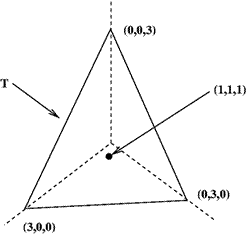Copyright © University of Cambridge. All rights reserved.
'Maximum Scattering' printed from https://nrich.maths.org/
Show menu
 |
a) The data obtained from a given experiment is a pair of
numbers $a$ and $b$, where $a\geq 0$ and $b\geq 0$. It is known
that $a$ and $b$ have mean $1$; what is the largest value that the
standard deviation can be?
(b) The data obtained from a given experiment is a triple of
numbers $x$, $y$ and $z$, where each is non-negative. It is known
that the mean of $x$, $y$ and $z$ is $1$; what is the largest value
that the standard deviation can be?
|
(c) The data obtained from a given experiment is a set of numbers $t_1,\ldots,t_n$, where each is non-negative. It is known that the mean of the $t_j$ is $1$. Show that the standard deviation may be as large as $\sqrt{n-1}$.